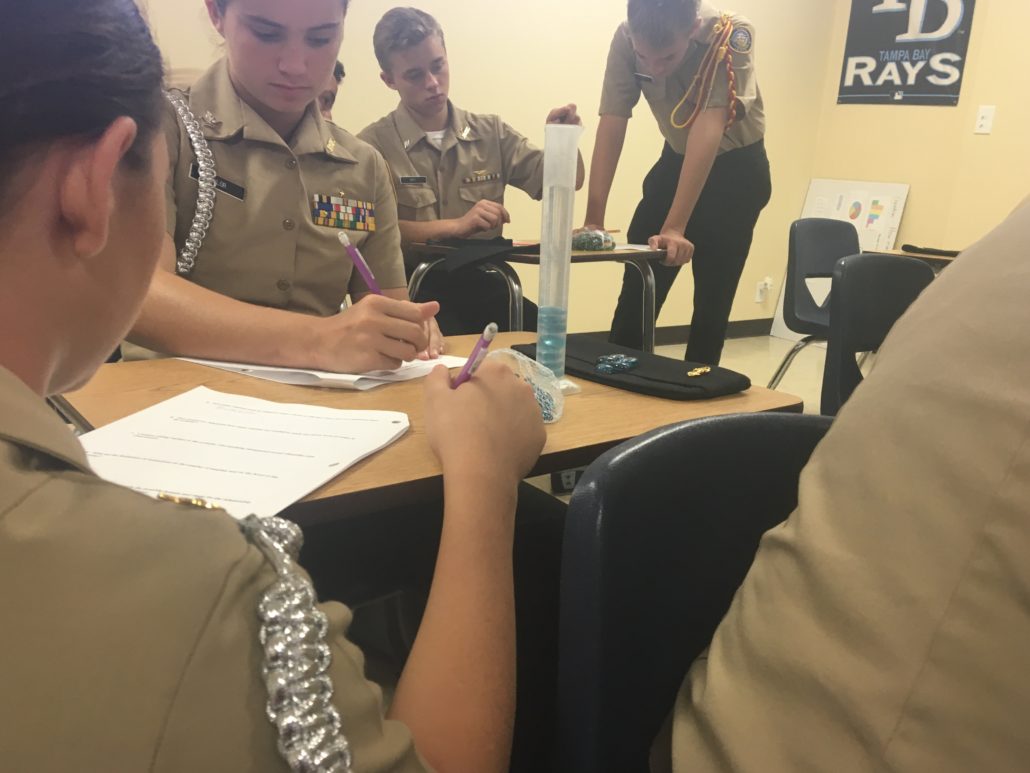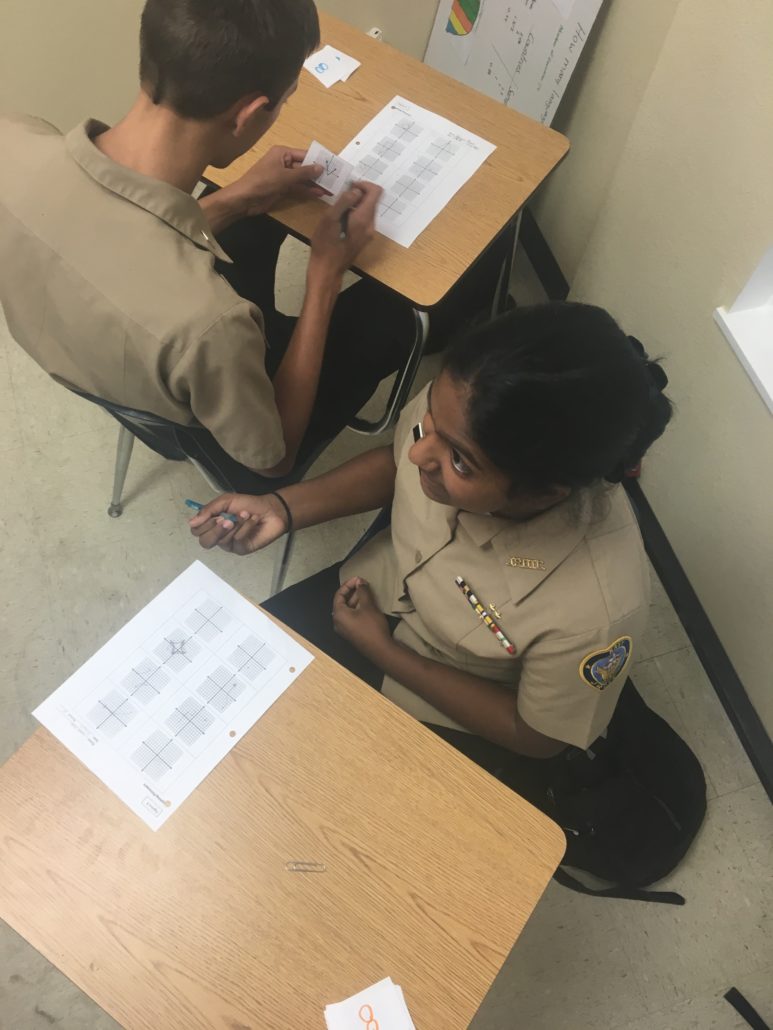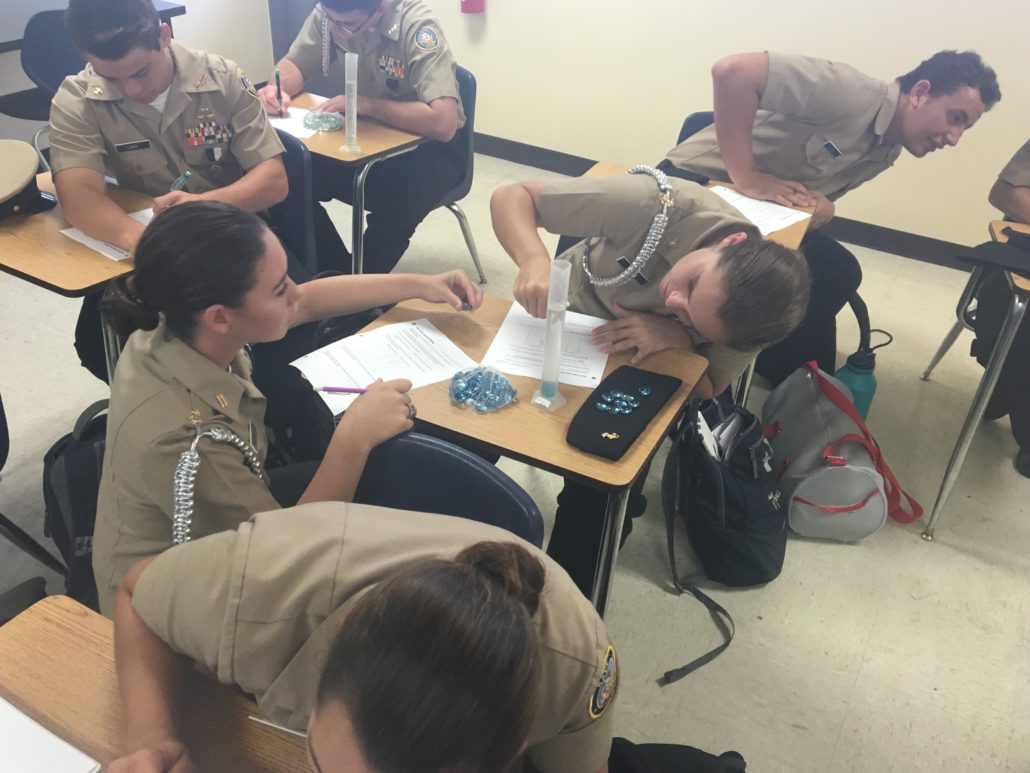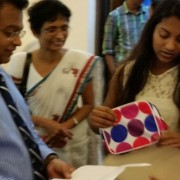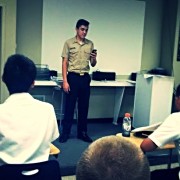Upper School teacher uses creative games to teach difficult math concepts
During this first semester, Upper School Math Instructor Ms. Amy Smith has been working hard to engage her Algebra II Honor students with fun games and activities. According to the MIND Research Institute, game-based math boosts students and teachers abilities to reason, understand underlying concepts and find solutions to complex math problems.
“My favorite part about these activities is watching our diverse students interact and work as a team with everyone in their class,” said Ms. Smith. “That is a true teacher win!”
For their first activity, Ms. Smith used competitive Graphing Pictionary as a fun introduction to parent functions, slope, domain, and range. She arranged the desks in a circle around the room, one facing outside and one facing inside. Each student was teamed up with a partner, and after one complete round, they rotated to a new partner. During each round of the game, Student #1 flipped over a graph with various designs on it and had to use their words to describe it to Student #2. Student #1 was not allowed to look at Student #2’s paper or use hand gestures. While Student #1 described the graph, Student #2 used the descriptions to recreate it on their paper. When they felt they had completed the graph they yelled “done” and the students were judged on accuracy and time.
For their second activity, Ms. Smith used a Rate of Change Lab, a real-world activity, to introduce functions. Using graduated cylinders from the Chemistry Lab, Ms. Smith filled them with 80mL of water. Each group was given a bag of marbles, and they had to estimate beforehand how many marbles it would take to reach 100mL. While completing the lab report, it led the students to the discovery of a function which is what they’d been learning all week. The marble was the “x” value and the independent variable, and the water was the “y” value and the dependent variable. Every marble they added in, the water would raise higher, and they eventually found the “average rate of change” also known as “slope” for their function.

